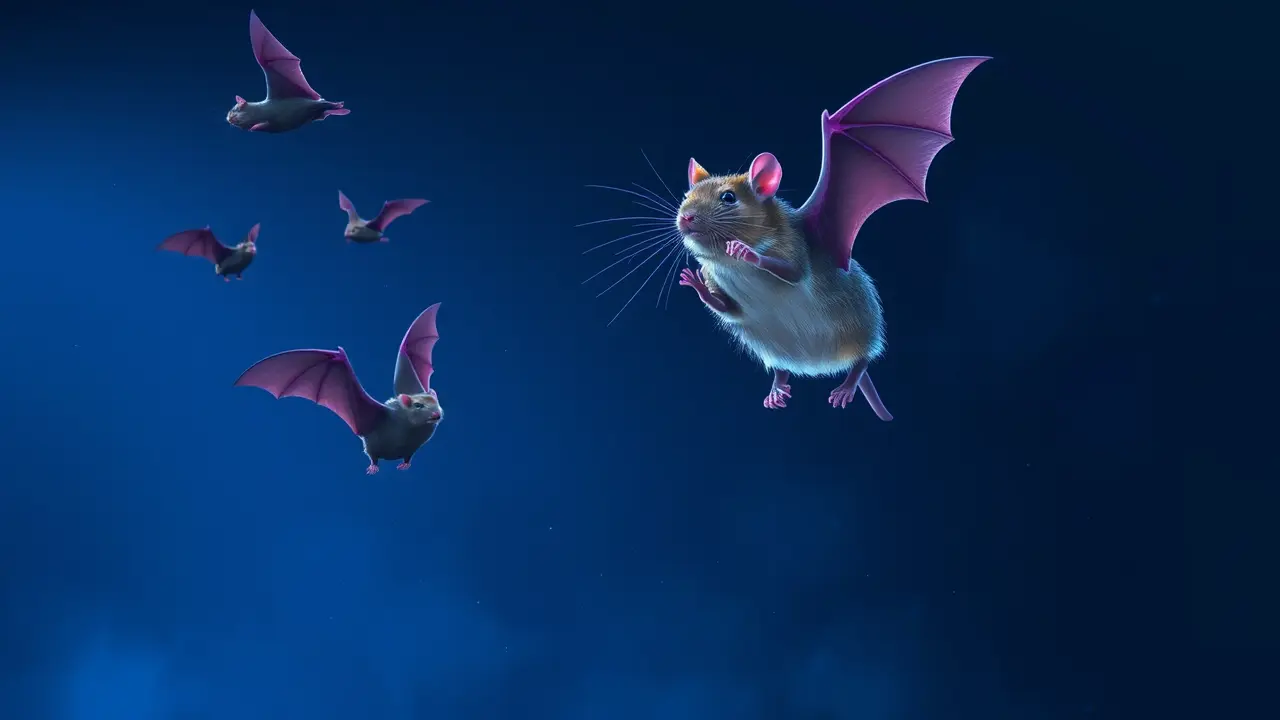
SciencebiologyAnimal Behavior
Brown Rats Filmed Catching and Eating Bats in Mid-Air
RA
Rachel Adams
2 days ago7 min read
In a startling ecological development that underscores the brutal realities of adaptive predation, scientists have documented the first confirmed instance of brown rats (Rattus norvegicus) actively hunting, capturing, and consuming bats in mid-flight. This behavior, captured on film in a cave system, represents a significant and alarming expansion of the brown rat's known predatory repertoire, a species already infamous for its devastating impact on native wildlife and its role as a vector for disease globally.The footage reveals a calculated ambush strategy; the rats position themselves at strategic points within the cave, leveraging their formidable agility to launch themselves at bats as they take off or land, snatching the flying mammals from the air with a terrifying efficiency before consuming them. This discovery arrives amidst a week of remarkable bat-related revelations, including the observation of certain European giant bats engaging in similarly brutal predation on birds, systematically tearing their wings off mid-flight, and the perplexing finding that several North American bat species possess biofluorescent fur, a trait of seemingly little utility for creatures that primarily navigate through echolocation.For ecologists like Dr. Alena Kostova, who has studied invasive species for two decades, the rat-on-bat predation is less a bizarre anomaly and more a predictable, though grim, consequence of human-altered ecosystems.'The brown rat is the ultimate generalist, an ecological opportunist whose behavioral plasticity is its greatest asset,' she explains from her field station. 'We've seen them prey on seabird colonies, decimate reptile populations on islands, and now, they are exploiting a new, aerial niche.This isn't just about one rat eating one bat; it's a symptom of a broader trophic cascade. Bats are critical pollinators and pest controllers.Their populations are already under immense pressure from white-nose syndrome and habitat fragmentation. The introduction of a hyper-efficient, novel predator like the rat at their roosting sites could be catastrophic for local bat colonies, potentially leading to localized extinctions and disrupting entire food webs.' The implications extend beyond immediate predation. Bats often congregate in large numbers in maternity roosts, making them exceptionally vulnerable to such targeted attacks, which could disproportionately impact reproductive success.Furthermore, this behavior highlights a terrifying evolutionary arms race, where a ground-dwelling rodent has developed the cognitive and physical capabilities to intercept a creature evolutionarily perfected for flight. Historically, such rapid behavioral adaptations have been precursors to significant ecological shifts. The event forces a sobering reflection on the relentless adaptability of invasive species in the Anthropocene and serves as a stark warning about the unintended consequences of global trade and urbanization, which continually ferry species like the brown rat into new environments where they rewrite the rules of survival, often at the expense of the native and the vulnerable.
#animal behavior
#brown rats
#bats
#predation
#wildlife
#biology
#featured
Stay Informed. Act Smarter.
Get weekly highlights, major headlines, and expert insights — then put your knowledge to work in our live prediction markets.
Related News
Comments
It’s quiet here...Start the conversation by leaving the first comment.
© 2025 Outpoll Service LTD. All rights reserved.
